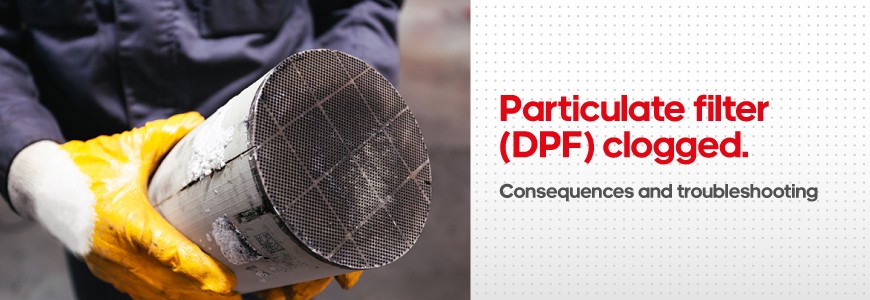
Fact, everyone knows, that a car with the diesel engine consumes on average 30% less fuel in comparison to the petrol cars of the same engine capacity. No wonder that the diesel vehicles have stolen the significant market share of passenger cars and dominate at the market of trucks and buses. At the same time, the diesel engines trail far behind the petrol engines when we talk about the environment protection. There’s a lot of nitrogen oxide and carbon black in the diesel exhausts. To make the diesel engine meet the rate of the acceptable emissions, it’s equipped with the oxidation catalyst and particulate filter which often clogs and causes plenty of trouble to the diesel car owners.
Why there’s much of soot in diesel engines?
The diesel fuel distinguishing characteristic is the inevitable formation of the particulatesduring the combustion – soot, even in the favourable conditions. When, however, the diesel fuel gets into the engine combustion chamber, where the time for the mixing of the fuel and air is limited, the amount of the soot highly increases. Although the diesel engine operates at lean air-fuel mixture – with the significant air excess, there’s a local air shortage.
Once the particulate filter has clogged, you should get it back to the normal operation, including the flushing of the particulate filter.
How soon the particulate filter gets clogged?
You’ll hardly find the definite numbers of a car mileage when the particulate filter may completely clog at. The average value is 120-200k km, and the following conditions influence the speed of the clogging:
- car running only in the cities, short distance travels;
- extreme driving – with frequent and hard acceleration;
- engine defects;
- big intervals between the service maintenance;
- bad fuel.
Operating diesel engine generates a lot of soot that accumulates in the particulate filter. Since the soot – unburnt fuel residues, it can be burnt off completely by means of DPF regeneration. When a car runs at the high speed, the exhaust gases can heat up to 600 °C. This temperature is enough for the soot to burn off completely. In some cars, the special liquid – catalyst – is injected into the exhaust system to lower the temperature of the soot ignition. It enables the regeneration of the particulate filter in the city traffic.
The question is why does DPF still clog although the soot burns off completely? The answer is an ash that is a result of the soot burning, and that clog the particulate filter. The oil that gets into the exhaust system mixes with the ash. It results in the mixture of soot, ash and oil that accumulates in the particulate filter. Any regeneration is not able to remove this mixture.
Particulate filter clog consequences
The driver will definitely know when DPF gets clogged because, like any other automotive failure, it has the specific symptoms:
- the fuel consumption increases while the capacity gets lower;
- the exhaust becomes more visible and has unpleasant smell;
- higher oil level in the engine;
- higher level of exhaust fume;
- abnormal noises during engine operation;
- DPF warning sign is illuminated on the instrumental panel.
Clogged particulate filter – what to do?
Once DPF warning sign is illuminated on the instrumental panel, the forced regeneration should be made.
Commonly, the diagnostic equipment is required for the forced regeneration although there are cars with the special button for the forced burning. Completely automatic, the forced burning is carried out on the stationary vehicle and takes around 20-30 minutes.
If DPF is clogged with the ash mostly, the regeneration is useless. In this case, the filter should be either replaced by a new one or flushed by the special equipment.
DPF flushing is a favourable alternative to the filter replacement because you get back the filter with the restored performance at the lower costs. MSG Equipment offers MS900 – the system for DPF flushing with a new washing technology. The flushing is made by the warm water that changes flow direction, by the pulsed injections of compressed air that removes the particulates properly.
Find out more about the professional equipment for DPF flushing on the website or call us.



COMMENTS